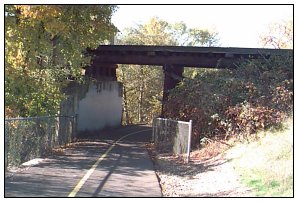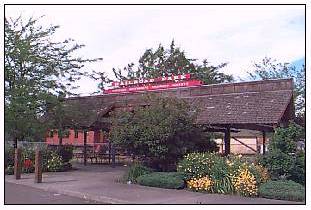The terrain beyond Eagle Point became more difficult and construction became too expensive, causing the company to go into receivership. It was purchased by the James H. Hill interests in 1907 and renamed the Pacific and Eastern Railroad. Construction was completed to Butte Falls in 1910. A spur track and depot terminal on East Main (present location of Hawthorne Park) handled passengers, freight, and "special excursion" trains to Eagle Point and Butte Falls from 1911 to 1918.
Unfortunately, operating expenses always exceeded revenues, so this service was discontinued. In 1920, Millard Olds bought the tailroad and in 1922 formed a partnership with James Brownlee. They began large-scale logging operations on public and private lands north and east of Butte Falls, using the railroad to haul logs to the Medford Mill. In 1924, the railroad was sold to Owens-Oregon, which operated it until 1962, even though it had been evident for many eyars that using trucks would be both more efficient and more economical. You will see some of the equipment used on this railroad in Railroad Park.
Standing by itself just past the trestle is an elm tree (Ulmus americana). The stately elm originated in the eastern United States, Europe, and Aisa; it is not native to our region. It grows well here, however, because it is drought tolerant. Notice that the leaves are attached unevenly at their bases, and that their edges are saw-toothed. Elms have tough surface roots that often crowd out nearby plants. Dutch elm disease has wiped out many stands of elm in the east and has now reached the west.
The trail forks ahead; go left. The last station is on the bridge on the way to Railroad Park.
 Station 17: Railroad Days
Station 17: Railroad Days


















